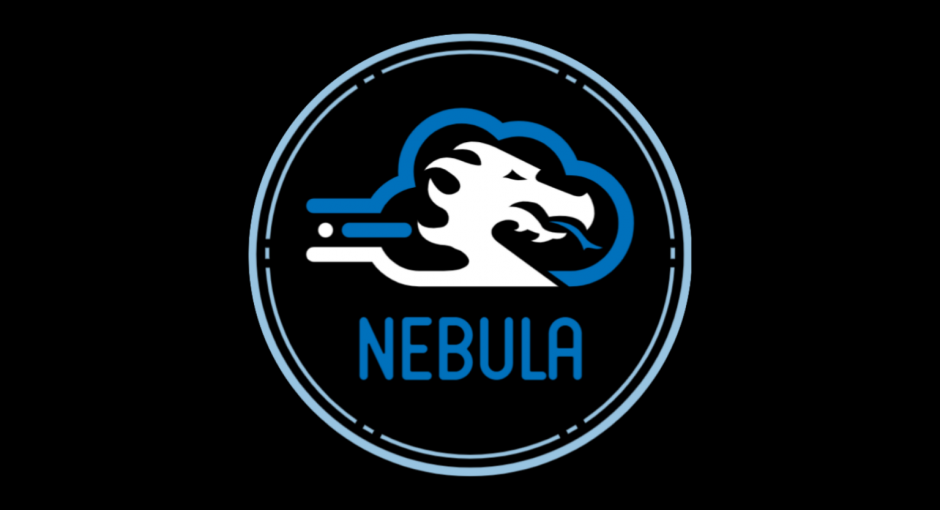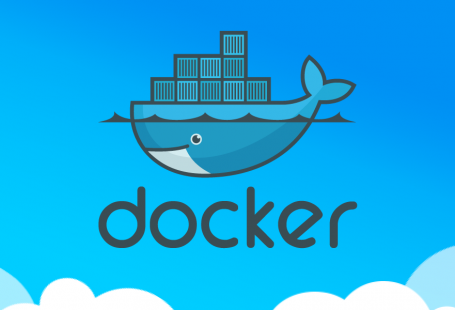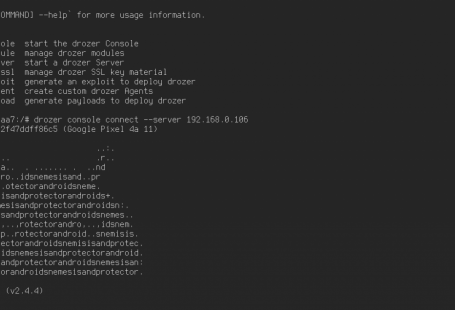Nebula — это среда для облачного тестирования на проникновение DevOps. Он построен с модулями для каждого поставщика и каждой функции. По состоянию на апрель 2021 года он распространяется только на AWS, но в настоящее время является текущим проектом и, надеюсь, продолжит расширяться для тестирования GCP, Azure, Kubernetes, Docker или механизмов автоматизации, таких как Ansible, Terraform, Chef и т. д. Сдесь рассмотрим эксплуатацию Nebula — Cloud C2 Framework.
- S3 Bucket name bruteforce (брутфорс имени сегмента)
- IAM, EC2, S3, STS и лямбда-перечисление Использование
- IAM, EC2, STS и S3 Перечисление
- SSM + использование
- Пользовательский агент HTTP
- Enumerate Read Privileges (работает с правами записи)
- Reverse Shell
- Нет кредитов Разведка
В настоящее время существует 67 модулей, охватывающих:
- Разведка
- Перечисление
- Использование
- Очистка
- Обратная оболочка
Инсталяция
Docker
Из Dockerhub
Клонируйте Nebula Repo из Github и извлеките образ Nebula Docker:
git clone https://github.com/gl4ssesbo1/Nebula
docker pull gl4ssesbo1/nebula:latest
а затем запустите main.py через:
cd Nebula
docker run -v $(pwd):/app -ti gl4ssesbo1/nebula:latest main.py
Не забудьте опцию -v, потому что она позволяет сохранять файлы в системе даже после удаления образа докера.
Использование DockerFile
Клонируйте Nebula Repo из Github и создайте образ Docker локально:
git clone https://github.com/gl4ssesbo1/Nebula
docker build -t nebula .
docker run -v Nebula:/app -ti nebula main.py
Не забудьте опцию -v, потому что она позволяет сохранять файлы в системе даже после удаления образа докера.
Добавление сопоставления портов
Если вы хотите запустить оболочку, также добавьте параметр -p:
cd Nebula
docker run -p <host port>:<container port> -v $(pwd):/app -ti gl4ssesbo1/nebula:latest main.py
Установка в системе
Nebula написан на python3.8 и протестирован на python3.8 и 3.9. Он использует библиотеку boto3 для доступа к AWS. Для установки просто установите python 3.8+ и установите необходимые библиотеки из файла requirements.txt.
python3.8 -m pip install -r requirements.txt
Затем установите плагин диспетчера сеансов. Это необходимо для модулей SSM:
curl "https://s3.amazonaws.com/session-manager-downloads/plugin/latest/ubuntu_64bit/session-manager-plugin.deb" -o "session-manager-plugin.deb"
dpkg -i session-manager-plugin.deb
На устройствах Windows, поскольку less не установлен, я получил его с https://github.com/jftuga/less-Windows. Предварительно собранный двоичный файл сохраняется в каталоге less_binary. Просто добавьте этот каталог в переменную среду PATH, и все будет в порядке.
Затем просто запустите main.py
python3.8 ./main.py
Использование
python3.9.exe .\main.py -b
-------------------------------------------------------------
50 aws 0 gcp 0 azure 0 office365
0 docker 0 kubernetes
-------------------------------------------------------------
50 modules 2 cleanup 0 detection
41 enum 6 exploit 0 persistence
0 listeners 0 lateral movement 0 detection bypass
0 privesc 1 reconnaissance 0 stager
-------------------------------------------------------------
()()(AWS) >>>
Помощь
Запустив команду справки, вы получите список команд, которые можно использовать:
()()(AWS) >>> help
Help Command: Description:
------------- ------------
help Show help for all the commands
help credentials Show help for credentials
help module Show help for modules
help workspace Show help for credentials
help user-agent Show help for credentials
help shell Show help for shell connections
Module Commands Description
--------------- -----------
show modules List all the modules
show enum List all Enumeration modules
show exploit List all Exploit modules
show persistence List all Persistence modules
show privesc List all Privilege Escalation modules
show reconnaissance List all Reconnaissance modules
show listener List all Reconnaissance modules
show cleanup List all Enumeration modules
show detection List all Exploit modules
show detectionbypass List all Persistence modules
show lateralmovement List all Privilege Escalation modules
show stager List all Reconnaissance modules
use module <module> Use a module.
options Show options of a module you have selected.
run Run a module you have selected. Eg: 'run <module name>'
search Search for a module via pattern. Eg: 'search s3'
back Unselect a module
set <option> Set option of a module. Need to have the module used first.
unset <option> Unset option of a module. Need to have the module used first.
User-Agent commands Description
------------------- -----------
set user-agent windows Set a windows client user agent
set user-agent linux Set a linux client user agent
set user-agent custom Set a custom client user agent
show user-agent Show the current user-agent
unset user-agent Use the user agent that boto3 produces
Workspace Commands Description
------------------ -----------
create workspace <wp> Create a workspace
use workspace <wp> Use one of the workspaces
remove workspace <wp> Remove a workspace
Shell commands Description
------------------- -----------
shell check_env Check the environment you are in, get data and meta-data
shell exit Kill a connection
shell <command> Run a command on a system. You don't need " on the command, just shell <command1> <command2>
Enum Privs
Если у вас есть набор учетных данных, вы можете ввести getuid, чтобы получить пользователя, или enum_user_privs, чтобы проверить разрешение на чтение набора учетных данных.
GetUID
(test)()(AWS) >>> getuid
------------------------------------------------
UserId: A******************Q
------------------------------------------------
UserID: A******************Q
Arn: arn:aws:iam::012345678912:user/user_user
Account: 012345678912
[*] Output is saved to './workspaces/test/12_07_2021_02_22_54_getuid_dev_brian'
Если у него нет указанных ниже привилегий,
STS:GetUserIdentity
IAM:GetUser
IAM:ListAttachedUserPolicies
IAM:GetPolicy (for all policies)
[*] An error occurred (AccessDenied) when calling the GetUser operation: User: arn:aws:iam::012345678912:user/user_user is not authorized to perform: iam:GetUser on resource: user user_user
Enum_User_Privs
Эта команда проверяет список и описание привилегий для набора учетных данных.
(test)()(AWS) >>> enum_user_privs
User: user_user
UserID: A******************Q
Arn: arn:aws:iam::012345678912:user/user_user
Account: 012345678912
--------------------------
Service: ec2
--------------------------
[*] Trying the 'Describe' functions:
[*] 'describe_account_attributes' worked!
[*] 'describe_addresses' worked!
[*] 'describe_aggregate_id_format' worked!
[*] 'describe_availability_zones' worked!
[*] 'describe_bundle_tasks' worked!
[*] 'describe_capacity_reservations' worked!
[*] 'describe_client_vpn_endpoints' worked!
[*] 'describe_coip_pools' worked!
[*] 'describe_customer_gateways' worked!
[*] 'describe_dhcp_options' worked!
[*] 'describe_egress_only_internet_gateways' worked!
^C[*] Stopping. It might take a while. Please wait.
[*] Output of the allowed functions is saved to './workspaces/test/12_07_2021_02_24_09_enum_user_privs'
[*] The list of the allowed functions is saved to './workspaces/test/12_07_2021_02_24_09_allowed_functions'
Модули
Листинг модулей
()()(AWS) >>> show modules
cleanup/aws_iam_delete_access_key Delete access key of a user by providing
it.
cleanup/aws_iam_delete_login_profile Delete access of a user to the Management
Console
enum/aws_ec2_enum_elastic_ips Lists User data of an Instance provided.
Requires Secret Key and Access Key of an IAM that has access
to it.
enum/aws_ec2_enum_images List all ec2 images. Needs credentials of an
IAM with DescribeImages right. Output is dumpled on a file.
It takes a sh*tload of time, unfortunately. And boy, is it a
huge output.
enum/aws_ec2_enum_instances Describes instances attribues: Instances, VCP,
Zones, Images, Security Groups, Snapshots, Subnets, Tags,
Volumes. Requires Secret Key and Access Key of an IAM that
has access to all or any of the API calls:
DescribeAvailabilityZones, DescribeImages,
DescribeInstances, DescribeKeyPairs, DescribeSecurityGroups,
DescribeSnapshots, DescribeSubnets, DescribeTags,
DescribeVolumes, DescribeVpcs
show module
show enum
show exploit
show persistence
show privesc
show reconnaissance
show listener
show cleanup
show detection
show detectionbypass
show lateralmovement
show stager
Поиск модулей
Используйте команду поиска для поиска модулей по определенному слову:
()()(AWS) >>> search instance
enum/aws_ec2_enum_instances Describes instances attribues: Instances, VCP,
Zones, Images, Security Groups, Snapshots, Subnets, Tags,
Volumes. Requires Secret Key and Access Key of an IAM that
has access to all or any of the API calls:
DescribeAvailabilityZones, DescribeImages,
DescribeInstances, DescribeKeyPairs, DescribeSecurityGroups,
DescribeSnapshots, DescribeSubnets, DescribeTags,
DescribeVolumes, DescribeVpcs
enum/aws_iam_list_instance_profiles List all the instance profiles.
exploit/aws_ec2_create_instance_with_user_data You must provide policies in JSON format in
IAM. However, for AWS CloudFormation templates formatted in
YAML, you can provide the policy in JSON or YAML format. AWS
CloudFormation always converts a YAML policy to JSON format
before submitting it to IAM.
()()(AWS) >>>
Использование модулей
Чтобы использовать модуль, просто введите использование и имя модуля. В 3 скобках будет указано название модуля.
(work1)()(enum/aws_ec2_enum_instances) >>> use module enum/aws_iam_get_group
(work1)()(enum/aws_ec2_enum_instances) >>>
Опции
Используя опции, мы можем перечислить информацию о модуле:
(work1)()(enum/aws_ec2_enum_instances) >>> options
Desctiption:
-----------------------------
Describes instances attribues: Instances, VCP, Zones, Images, Security Groups, Snapshots, Subnets, Tags, Volumes. Requires Secret Key and Access Key of an IAM that has access to all or any of the API calls: DescribeAvailabilityZones, DescribeImages, DescribeInstances, DescribeKeyPairs, DescribeSecurityGroups, DescribeSnapshots, DescribeSubnets, DescribeTags, DescribeVolumes, DescribeVpcs
Author:
-----------------------------
name: gl4ssesbo1
twitter: https://twitter.com/gl4ssesbo1
github: https://github.com/gl4ssesbo1
blog: https://www.pepperclipp.com/
AWSCLI Command:
-----------------------------
aws ec2 describe-instances --region {} --profile {}
Needs Credentials: True
-----------------------------
Options:
-----------------------------
SERVICE: ec2
Required: true
Description: The service that will be used to run the module. It cannot be changed.
INSTANCE-ID:
Required: false
Description: The ID of the instance you want to enumerate. If not supplied, all instances will be enumerated.
(work1)()(enum/aws_ec2_enum_instances) >>>
Чтобы установить параметры, используйте набор и имя параметра:
(work1)()(enum/aws_ec2_enum_instances) >>> set INSTANCE-ID 1234
(work1)()(enum/aws_ec2_enum_instances) >>> options
Desctiption:
-----------------------------
Describes instances attribues: Instances, VCP, Zones, Images, Security Groups, Snapshots, Subnets, Tags, Volumes. Requires Secret Key and Access Key of an IAM that has access to all or any of the API calls: DescribeAvailabilityZones, DescribeImages, DescribeInstances, DescribeKeyPairs, DescribeSecurityGroups, DescribeSnapshots, DescribeSubnets, DescribeTags, DescribeVolumes, DescribeVpcs
Author:
-----------------------------
name: gl4ssesbo1
twitter: https://twitter.com/gl4ssesbo1
github: https://github.com/gl4ssesbo1
blog: https://www.pepperclipp.com/
Needs Credentials: True
-----------------------------
AWSCLI Command:
-----------------------------
aws ec2 describe-instances --region {} --profile {}
Options:
-----------------------------
SERVICE: ec2
Required: true
Description: The service that will be used to run the module. It cannot be changed.
INSTANCE-ID: 1234
Required: false
Description: The ID of the instance you want to enumerate. If not supplied, all instances will be enumerated.
(work1)()(enum/aws_ec2_enum_instances) >>>
(work1)()(enum/aws_ec2_enum_instances) >>> unset INSTANCE-ID
(work1)()(enum/aws_ec2_enum_instances) >>>
Запуск модуля
Needs Credentials: True
-----------------------------
Чтобы запустить его, просто введите run. В зависимости от вывода он будет либо отображать разбитое на страницы представление, либо просто распечатает его. При разбивке на страницы используется меньше двоичного кода, который для Windows использует двоичный файл из https://github.com/jftuga/less-Windows. Копия exe находится в каталоге less_binary. Вывод также сохраняется в файлах в каталоге рабочей области:
(work1)()(enum/aws_ec2_enum_instances) >>> run
[*] Content dumped on file './workspaces/work1/16_04_2021_18_16_48_ec2_enum_instances'.
Реквизиты для входа
#### Ввод учетных данных Nebula может использовать комбинацию AccessKeyID + SecretKey и комбинацию AccessKeyID + SecretKey + SessionKey для аутентификации в инфраструктуре. Чтобы вставить набор учетных данных, используйте:
()()(AWS) >>> set credentials test1
Profile Name: test1
Access Key ID: A*********2
Secret Key ID: a****************************7
Region: us-west-3
Do you also have a session token?[y/N]
[*] Credentials set. Use 'show credentials' to check them.
[*] Currect credential profile set to 'test1'.Use 'show current-creds' to check them.
И вы получите несколько входов, позволяющих их установить. Токен сеанса можно добавить при вводе учетных данных, введя y, когда его спросят. У вас также есть токен сеанса? [Y / N].
()()(AWS) >>> use credentials test1
[*] Currect credential profile set to 'test1'.Use 'show current-creds' to check them.
####Текущие учетные данные. Когда вы вводите учетные данные, они автоматически становятся текущими учетными данными, то есть теми, с которыми вы будете проходить аутентификацию. Чтобы проверить текущие учетные данные, используйте:
()()(AWS) >>> show current-creds
{
"profile": "test1",
"access_key_id": "A*********2",
"secret_key": "a****************************7",
"region": "us-west-3"
}
####Удаление учетных данных. Если вам не нужны учетные данные, вы можете удалить их, используя:
()()(AWS) >>> remove credentials test1
You are about to remove credential 'test1'. Are you sure? [y/N] y
#### Выгрузка и импорт учетных данных. Если вы хотите, чтобы ваши учетные данные были сохранены на машине, вы можете использовать:
()()(AWS) >>> dump credentials
[*] Credentials dumped on file './credentials/16_04_2021_17_37_59'.
И они будут сохранены в файле, содержащем время и дату дампа учетных данных каталога в каталоге Nebula. Чтобы импортировать их, просто введите:
()()(AWS) >>> import credentials 16_04_2021_17_37_59
()()(AWS) >>> show credentials
[
{
"profile": "test1",
"access_key_id": "A*********2",
"secret_key": "a****************************7",
"region": "us-west-3"
}
]
Рабочие пространства
Nebula использует рабочие пространствадля сохранения вывода каждой команды. Вывод сохраняется как данные json (за исключением s3_name_fuzzer, который сохраняет его как XML) в папке, созданной в рабочих областях каталогов.
Создать рабочие места
()()(AWS) >>> create workspace work1
[*] Workspace 'work1' created.
[*] Current workspace set at 'work1'.
(work1)()(AWS) >>> ls ./workspaces
Directory: C:\Users\***\Desktop\Nebula\workspaces
Mode LastWriteTime Length Name
---- ------------- ------ ----
d----- 4/16/2021 5:42 PM work1
-a---- 4/16/2021 4:40 PM 0 __init__.py
При создании первые скобки будут содержать название рабочего пространства, над которым вы работаете. Если вы хотите использовать существующее рабочее пространство, просто введите:
()()(AWS) >>> use workspace work1
(work1)()(AWS) >>>
Необходимо использовать рабочие пространства, поэтому, даже если вы не используете их в данный момент, при запуске модуля он попросит вас создать его со случайным именем или просто создать его с настраиваемым именем самостоятельно.
()()(enum/aws_ec2_enum_instances) >>> run
A workspace is not configured. Workstation 'qxryiuct' will be created. Are you sure? [y/N] n
[*] Create a workstation first using 'create workstation <workstation name>'.
()()(enum/aws_ec2_enum_instances) >>>
Список рабочих пространств
Чтобы получить список рабочих пространств, используйте:
(work1)()(enum/aws_ec2_enum_instances) >>> show workspaces
-----------------------------------
Workspaces:
-----------------------------------
work1
(work1)()(enum/aws_ec2_enum_instances) >>>
Удаление рабочих пространств
Чтобы удалить рабочее пространство, введите:
()()(AWS) >>> remove workspace work1
[*] Are you sure you want to delete the workspace? [y/N] y
()()(AWS) >>> show workspaces
-----------------------------------
Workspaces:
-----------------------------------
()()(AWS) >>>
Обратная оболочка
Чтобы создать обратную оболочку, вам нужно создать стейджер и запустить listener. Чтобы использовать эту функцию, вам необходимо запустить Nebula от имени пользователя root (чтобы открывать порты).
Stager
Чтобы сгенерировать стейджер, используйте модули в стейджерах:
()()(AWS) >>> use module stager/aws_python_tcp
()()(stager/aws_python_tcp) >>> options
Desctiption:
-----------------------------
The TCP Reverse Shell that is used by listeners/aws_python_tcp_listener
Author:
-----------------------------
name: gl4ssesbo1
twitter: https://twitter.com/gl4ssesbo1
github: https://github.com/gl4ssesbo1
blog: https://www.pepperclipp.com/
Needs Credentials: False
-----------------------------
AWSCLI Command:
-----------------------------
None
Options:
-----------------------------
SERVICE: none
Required: true
Description: The service that will be used to run the module. It cannot be changed.
HOST:
Required: true
Description: The Host/IP of the C2 Server.
PORT:
Required: true
Description: The C2 Server Port.
FORMAT:
Required: true
Description: The format of the stager. Currently only allows 'py' for Python and 'elf' for ELF Binary.
CALLBACK-TIME: None
Required: true
Description: The time in seconds between callbacks from Stager. The Stager calls back even if the server crashes or is stoped in a loop.
OUTPUT-FILE-NAME:
Required: true
Description: The name of the stager output file.
Варианты заполнения:
- HOST: IP-адрес или домен сервера C2.
- Порт: порт сервера C2
- Формат: в настоящее время поддерживает только необработанный файл Python и двоичный файл elf.
- Callback-Time: время в секундах, в течение которого сеансы должны перезвонить. Он выполняет обратный вызов, даже если текущий сеанс запущен, и даже если сервер выходит из строя или закрывается, так что вы не потеряете доступ к машине.
- Имя выходного файла: имя выходного файла.
При запуске модуля будет создан stager, сохраненный в ./workspaces/workspacename/stagername.
Listener (слушатель)
Listener прост. Просто настройте Host (по умолчанию 0.0.0.0) и Port, и он создаст сервер. Чтобы запустить прослушиватель, вам нужно, чтобы Nebula запускалась от имени пользователя root.
()()(stager/aws_python_tcp) >>> use module listeners/aws_python_tcp_listener
()()(listeners/aws_python_tcp_listener) >>> options
Desctiption:
-----------------------------
TCP Listener for Reverse Shell stagers/aws_python_tcp
Author:
-----------------------------
name: gl4ssesbo1
twitter: https://twitter.com/gl4ssesbo1
github: https://github.com/gl4ssesbo1
blog: https://www.pepperclipp.com/
Needs Credentials: False
-----------------------------
AWSCLI Command:
-----------------------------
None
Options:
-----------------------------
SERVICE: none
Required: true
Description: The service that will be used to run the module. It cannot be changed.
HOST: 0.0.0.0
Required: true
Description: The Host/IP of the C2 Server.
PORT:
Required: true
Description: The C2 Server Port.
Пользовательские агенты
Пользовательские агенты могут быть настроены как Linux, Windows или пользовательские. Чтобы показать их, просто используйте show.
()()(AWS) >>> set user-agent linux
User Agent: Boto3/1.9.89 Python/3.8.1 Linux/4.1.2-34-generic was set
()()(AWS) >>> show user-agent
[*] User Agent is: Boto3/1.9.89 Python/3.8.1 Linux/4.1.2-34-generic
()()(AWS) >>> set user-agent windows
User Agent: Boto3/1.7.48 Python/3.9.1 Windows/7 Botocore/1.10.48 was set
()()(AWS) >>> show user-agent
[*] User Agent is: Boto3/1.7.48 Python/3.9.1 Windows/7 Botocore/1.10.48
()()(AWS) >>> set user-agent custom
Enter the User-Agent you want: sth
User Agent: sth was set
()()(AWS) >>> show user-agent
[*] User Agent is: sth
()()(AWS) >>>
()()(AWS) >>> unset user-agent
[*] User Agent set to empty.
Заключение
Платформа позволяет организовать функционирование распределенной инфраструктуры для динамично развернутых многоуровневых сервисов (групп из взаимосвязанных виртуальных машин), комбинируя ресурсы локального дата-центра и внешних облачных провайдеров. В частности, OpenNebula позволяет на своих мощностях поднять инфраструктуру для предоставления сервисов IaaS (инфраструктура как сервис), похожую на Amazon EC2. В наличии имеются средства для организации развертывания виртуальных окружений, мониторинга, контроля доступа, обеспечения безопасности и управления хранилищем.






